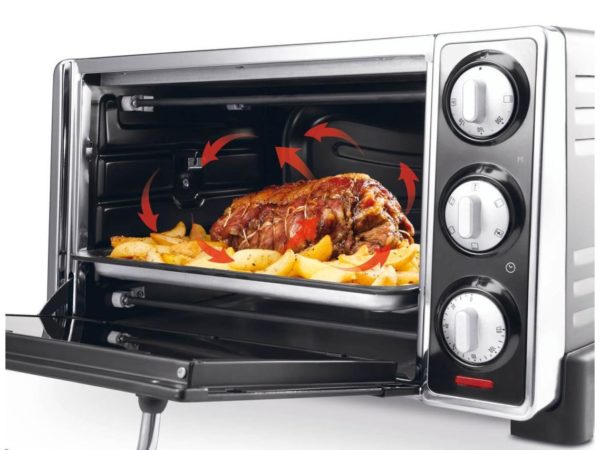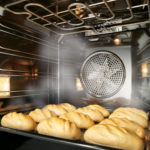Why convection is needed and its types
Most likely, most housewives are familiar with the situation: we take out the pie from the oven, and it is half raw, or, conversely, half burnt. What is the reason for this? And is it possible to somehow solve this problem?

Process description
Many have not heard such a word, but it turns out that the problem of uneven heating of food in the oven is connected with it. What is convection and what is it? Convection is literally translated from Latin as "transfer". That is, this is a type of heat exchange in which the movement of energy is carried out by means of jets and streams.

And in the oven, convection of two types can take place: natural and forced. A natural process is when, from the moment the heating element is turned on, warm air rises up, and cold air falls. Then gradually warm and cold air masses are mixed, and as a result, the oven reaches the same temperature.

What is convection in a forced oven? Let's take a closer look.
Forced convection
To achieve even baking of the dish, many use the old and proven method: move the baking sheet from one level to another. Others wrap the dish in foil or place a container of water.

Usually, such manipulations are carried out in simple old-style gas stoves (without a grill and defrosting mode), in which there is only a lower heating element. However, as experience shows, the problem of burning and uneven heating is not solved by the installation of an upper heating device. Let's try to figure out why this is happening.

It should be noted that natural convection in the oven is a rather slow process. While the streams of warm and cold air are moving, the dish has time to burn due to the point effect. In addition, a number of factors affect the uniformity: the degree of tightness of the oven and the width of the baking sheet.

Finally, the size of the dish placed in the oven also plays an important role. So, large pieces of meat or whole poultry do not have time to warm up inside, but burn from above, since they are located close to the heating elements.

The problem can be solved with forced convection. Setting up the process is quite simple: a convector (or fan) is placed in the oven, which helps air masses of different temperatures mix faster.

The constant movement of air flows not only ensures a uniform temperature, but also reduces the point effect of the heater. This means that both inside and outside the dish warms up evenly.

Another advantage of forced convection is that thanks to it, it becomes possible to cook several dishes at the same time at different levels, without fear that they will burn, or, conversely, remain unbaked.

Convection types
Modern technologies allow not only installing the convector in the oven, but also independently choosing the type of convection.
- Fan. The easiest option. "Drives" air masses inside the oven, ensuring uniform heating.
- Fan with ring heater. Such a device guarantees quick warming up and shortening the time for cooking.
- Reinforced convector. Ideal for those who like “crusty” dishes. Creates rapid air currents inside the oven, quickly "gripping" the surface of the dish.
- Double convection. In some ovens, two convectors are installed at once at different levels, which guarantees a separate "study" of each baking sheet.
- Wet convection. This process will help prepare healthy meals, as they will not be fried, but stewed. Ideal for baking and healthy food with a minimum of salt and fat.
Video: Oven Convection mode how to use the oven correctly
Important! When choosing a convection oven, remember that cooking time will be reduced by about a third. Take this point into account when choosing the temperature and cooking time.
The benefits of convection in any oven are obvious. Thanks to it, you can not only prepare healthy and tasty meals, but also save time and energy.










